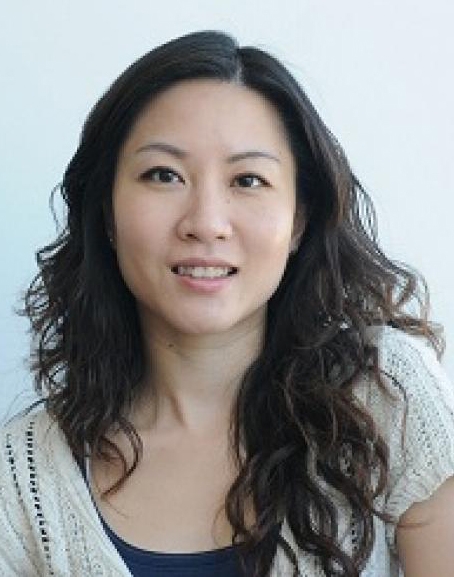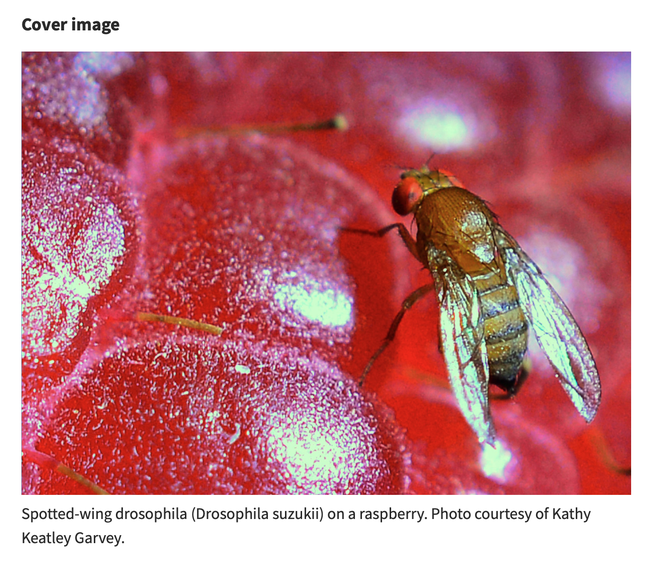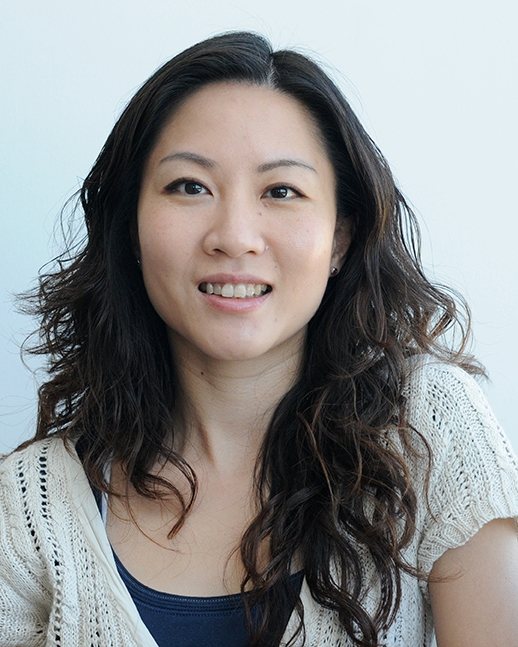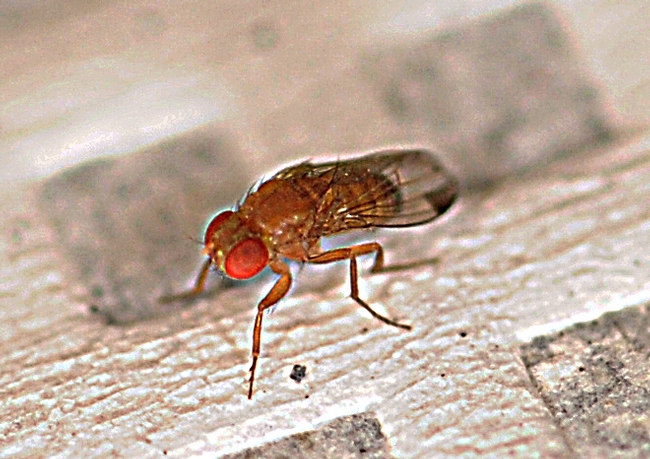- Author: Kathy Keatley Garvey

Native to Asia, the agricultural pest is a worldwide threat to the berry production industry, which includes raspberries, blackberries, blueberries, strawberries, and cherries. The tiny insect, about 1/12 to 1/8 inch long, invaded the continental United States in 2008.
“All of the papers were by invitation of the co-editors of the special collection—Jana Lee, Cesar Rodrigue-Saona, and me,” said journal editor-in-chief Frank Zalom, a UC Davis distinguished professor emeritus and recall professor in the Department of Entomology and Nematology. Zalom's research includes the spotted-wing drosophila.
Lee, formerly with the UC Davis laboratory of the late chemical ecologist Steve Seybold, is a research entomologist with the Horticultural Crops Research Unit, U. S. Department of Agriculture, Agricultural Research Service, Corvallis. Rodriguez-Saona, who received his doctorate from UC Riverside, is an Extension entomologist with the Department of Entomology, Rutgers University, the State University of New Jersey.
In addition to Zalom and Lee, the UC Davis-linked authors include Joanna Chiu and Antoine Abrieux (Joanna Chiu lab); Zain Syed and Kevin Cloonan (Walter Leal lab); Gregory Loeb (Rick Karban lab); and Kelly Hamby, Hannah Burrack, Fatemeh Ganjisaffar, Brian Gress, Nicole Nicola and Mark Demkovich (Zalom lab).
Overall, the Special Collection includes authors from Austria, Brazil, Canada, Italy, Spain, Sweden, United Kingdom, and the United States that represent perspectives from universities, federal and state laboratories, growers, and pest product companies, according to the editors.

UC Davis Department of Entomology and Nematology communication specialist Kathy Keatley Garvey provided the cover photo of the spotted-wing drosophila feeding on a raspberry.
Since 2008, "D. suzukii has become a key economical pest of raspberries, blackberries, blueberries, strawberries, and cherries in the United States and worldwide," the editors wrote in their introductory remarks. "Not surprisingly, the number of publications has proliferated from 29 publications as of 2010 to 978 additional publications between 2011 and 2021 from a Web of Science search for ‘Drosophila suzukii.' While many publications are available, this special collection will highlight advances in D. suzukii pest management since its U.S. invasion. We solicited papers by open call and received 66 abstracts, and selected 14 papers covering: 1) review, 2) monitoring and risk, 3) behavioral control, 4) biological control, 5) cultural control, and 6) chemical control."
The editors pointed out that “Given that 14 years of research has accumulated since the continental U.S. invasion, it was fitting to include two reviews that provide a different scope than was covered in prior reviews on D. suzukii biological control (Lee et al. 2019, Wang et al. 2020), trapping (Burrack et al. 2020), cultural control (Schöneberg et al. 2021), and chemical ecology (Cloonan et al. 2018). This special collection is anchored by Tait et al. (2021), a review of the most promising methods as part of an Integrated Pest Management (IPM) strategy against D. suzukii across the world since 2008. The effectiveness, impact, sustainability, and present stage of development and implementation are discussed for each of the considered techniques, and insights for continued development are presented.”
“A second review in this special collection by Garcia et al. (2022) summarizes the history and current status of D. suzukii in Latin America. The authors first provide a history of the D. suzukii invasion through Latin American countries, which started in 2011 in Mexico, and is now present in Argentina, Brazil, Chile, and Uruguay. They describe the host plants where D. suzukii has been found as well as advances in monitoring, biological control, chemical control, cultural control, and in the sterile insect technique. The authors posit that this information can serve as the basis for developing sustainable area-wide management programs in Latin America.”
The researchers related that the pest is a significant threat to California's berry production industry, which the California Department of Food and Agriculture (CDFA) valued at more than $2.8 billion in 2019. Caneberries, in particular, "are a preferred host of D. suzukii, and California accounts for 89.4 percent of all production in the United States, with the Monterey Bay region producing about half of the state's raspberries and blackberries (CDFA 2020). This pest has now spread to all major berry and cherry growing areas of the United States."
The collection is meant to serve "as a key reference point for entomologists across many institutions (e.g., academia, government, and industry) on important advances in D. suzukii pest management," according to the Entomological Society of America. "The articles in this collection will also provide scientists information on potential research gaps that will help guide future research directions on this important pest. The goal is to preserve and catalog articles on various aspects of D. suzukii pest management, i.e., monitoring, cultural control, chemical control, behavioral control, and biological control, that will be shared among entomologists."

- Author: Kathy Keatley Garvey

Her research expertise involves molecular genetics of animal behavior, circadian rhythm biology, and posttranslational regulation of proteins.
By using Drosophila melanogaster as a model to study the mechanisms that regulate circadian clocks, Chiu has discovered new insights into the function of key proteins that control animal circadian clocks. In particular, she has identified new mechanisms that slow down or speed up the internal clock of fruit flies and mechanisms that allow the internal clock to interpret food as timing cues--research that could help lead the way to alleviate human circadian disorders.
“Dr. Chiu is a prolific, phenomenal and talented scholar whose research is innovative, cutting-edge and groundbreaking,” said Helene Dillard, dean of the College of Agricultural and Environmental Sciences.
Steve Nadler, professor and chair of the Department of Entomology and Nematology, describes her as “a rising star.”
In announcing the Chancellor's Fellows, Chancellor Gary S. May said: “They've clearly made a mark both at UC Davis and within the academy generally. I have no doubt their contributions will continue to grow.” Each will retain the title for five years and receive a prize of $25,000 earmarked for research or scholarly work. Private donations to the UC Davis Annual Fund and the UC Davis Parents' Fund finance the program.
Chiu joined the Department of Entomology and Nematology in 2010 as an assistant professor and advanced to associate professor and vice chair in 2016. She received her bachelor's degree in biology and music from Mount Holyoke College, Mass., and her doctorate in molecular genetics in 2004 from New York University, New York. She served as a postdoctoral fellow from 2004 to 2010 in chronobiology (biological rhythms and internal clocks)--molecular genetics and biochemistry--at the Center for Advanced Biotechnology and Medicine, at Rutgers, the State University of New Jersey.
Major grants from the National Institutes of Health and the National Science Foundation fund Chiu's biological rhythms research.
In addition to her research in biological rhythms, Chiu also aims to leverage her expertise in genomics to address key issues in global food security. She is the principal investigator (PI) or co-PI on six grant awards from the State of California to research various fruit crops damaged by the spotted-wing Drosophila. At the time of her nomination, her publication record included 41 journal publications and book chapters, one U.S. Patent, and more than 3,235 journal citations (Google Scholar).
Chiu targets the spotted wing drosophila, Drosophila suzukii, first detected in North America in central California in August 2008. A native of Southeast Asia, the invasive species has already caused billions of dollars in damage to U.S. agriculture. Chiu took the lead role in sequencing the genome and is now heavily involved in finding new and more sustainable strategies to control the pest.
Chiu instigated the drive to obtain genomic data prior to its adaptation to a variety of local environments, which can differ in climate, pesticide use, natural enemies and types of fruits available. She played a leading role in establishing the SpottedWingFlyBase, a publicly available web portal documenting a variety of genomic databases for this species.
Chiu co-founded and co-directs (with professor Jay Rosenheim and associate professor Louie Yang) the campuswide Research Scholars Program in Insect Biology, launched in 2011 to provide undergraduates with a closely mentored research experience in biology. The program's goal is to provide academically strong and highly motivated undergraduates with a multi-year research experience that cultivates skills that will prepare them for a career in biological research.
Under her tutelage, many of Chiu's students are first authors of publications in prestigious journals. She continues to provide guidance and advice to undergraduate and graduate students and those who have embarked on their careers.
Former UC Davis graduate student Kelly Hamby, now assistant professor/Extension specialist in the Department of Entomology, University of Maryland, said Chiu “is so generous of her time and advice. Her office is always open to students, whether they are visiting high school students, undergraduates, or graduate students, her own students or someone else's. She carefully guides students throughout their experiments, directly providing technical training—side by side at the bench—while developing their critical thinking and communication skills. Joanna not only imparts excellent analytic and laboratory molecular skills to her students, but also commits to providing ongoing professional advice and development. Joanna's mentorship continues long after graduate and she leaves a lasting impression on students.”
“Joanna's teaching philosophy is clearly targeted towards the professional development of her students, modeling assignments on the activities of practicing scientists,” Hamby added.
The previous recipient from the Department of Entomology and Nematology was pollination ecologist Neal Williams, now a professor.
See list of this year's Chancellor's Fellows on UC Davis Dateline.
- Author: Kathy Keatley Garvey

Native to Southeast Asia, Drosophilia suzukii infests soft-skinned fruits such as strawberries, raspberries, cherries, blueberries and blackberries. The insect was first detected in the United States in 2008 when scientists identified it in the central coastal region of California. It can cause an estimated $300 million in damage annually to California crops.
In pioneering research, the four-member team from the Department of Entomology and Nematology sought to find out the pest’s response to insecticide toxicity and whether it could be predicted through the integration of circadian activity and gene expression profiles.
“It is possible that if insecticides can be applied at the time when the SWD's defense system against insecticides is at its weakest state, they will be more effective,” Chiu said. “Results from our experiments turned out to be a bit more complicated than we originally envisioned, but we indeed found that at least for malathion, there is an optimal time for application to inflict maximum damage to SWD. We hope that growers will be able to use fewer insecticides, thereby decreasing damage to the environment and decreasing costs at the same time.”
“We caution growers that we still need to conduct field trials to confirm our laboratory observations,” Chiu addedf.

“SWD is becoming a big problem for growers of soft-skinned fruits such as strawberries, raspberries, blueberries, and cherries all over the world,” Chiu pointed out. “With the need to satisfy insect damage standards and to reduce crop loss, the growers generally adopt high levels of insecticide usage for SWD control and risk reduction. In the long-term, this will lead to development of insecticide resistance, not to mention the damage inflicted on beneficial insects.”
“Current Drosophila suzukii management strategies rely heavily on insecticide usage, because other pest management tactics are still being development and optimized,” wrote Chiu and fellow authors Frank Zalom, integrated pest management specialist and professor of entomology; doctoral candidate Kelly Hamby of the Zalom lab; and graduate student Rosanna Kwok of the Chiu lab.

Said Hamby: “The paper is a first look at Drosophilia suzukii daily activity rhythms under a temperature and light/dark cycle mimicking California raspberry growing conditions as well as a look at the daily cycling of insecticide susceptibility enzymes that could potentially detoxify insecticides. The next steps would be to include more temperature conditions, more insecticides, and attempt an experiment in the field.”
"For me, the importance of our research is that it allows us to move toward a more effective and efficient way of controlling this pest, which is rapidly becoming of prominent importance because of how fast Drosophila suzukii has been spreading throughout the western US since its initial introduction," said Kwok. "By recognizing temporal differences that may contribute to a difference in toxicity to certain pesticides, we may be able to move toward management programs that are tailored to target a specific species of insect. We may be able to spray less or less frequently if we can find out when these pests are most susceptible."
"As for the future," Kwok added, "I think that as we sequence and fully annotate the D. suzukii genome we can identify more genes that are implicated in toxicity and pesticide resistance."
Chiu praised the work of the graduate students. "I think Kelly and Rosanna really did a fantastic job on this project!" she said.
The study took place under laboratory conditions simulating summer and winter in Watsonville. The team found significant differences in the chronotoxicity of SWD toward malathion, with the highest susceptibility at 6 a.m., “corresponding to peak expression of cytochrome P450s that may be involved in bioactivation of malathion,” they wrote in their abstract. “Chronobiology and chronotoxicity of D. suzukii provide valuable insights for monitoring and control efforts, because insect activity as well as insecticide timing and efficacy are crucial considerations for pest management.”
The spotted-wing drosophila was first observed in Japan as early as 1916. The females lay their eggs in ripe and ripening fruit, unlike other Drosophila species known to infest overripe and blemished fruit. The larvae feed on the fruit. “The adult is the only stage that can be targeted for control by conventional pesticides,” the UC Davis scientists wrote. The most commonly used insecticides are organophosphates, pyrethroids and spinosyns.



